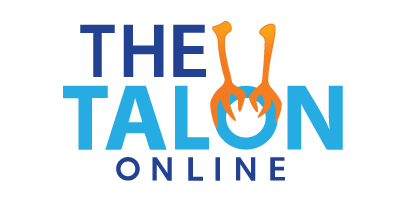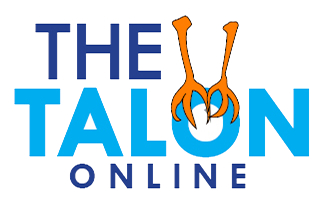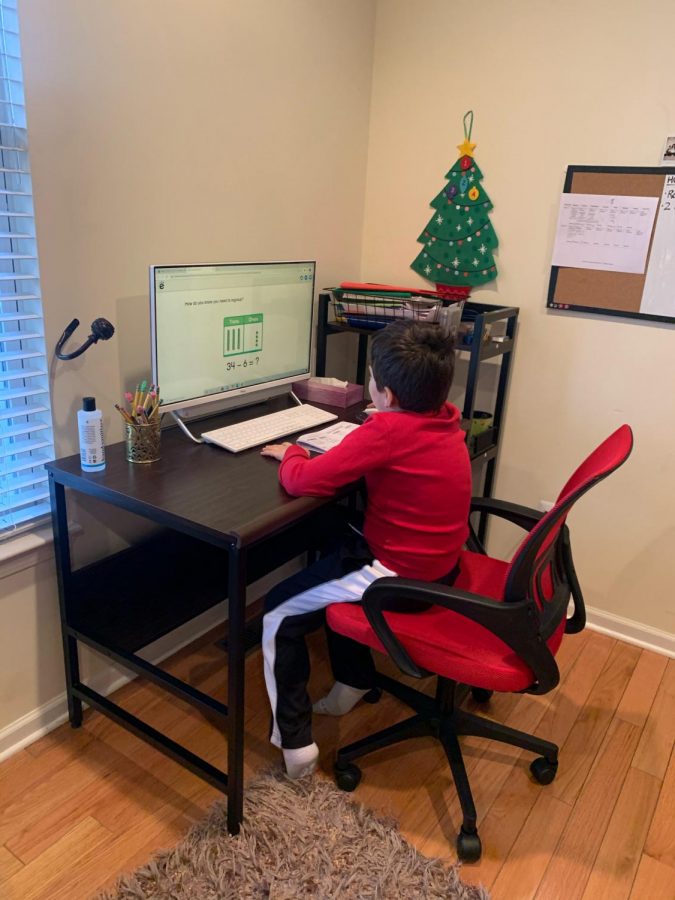Tiny humans’ big perspectives on remote learning
K-8 students and educators discuss the rain and sunshine of learning in the midst pf an unprecedented pandemic
December 5, 2020
Every school day, Mariah, an eighth-grader at West Middle School, wakes up, throws on an outfit, and sits in front of her computer to log on to her first Zoom of the day. Just one year ago, she dreamt of being at the top of the school. She could not wait to spend some time with friends she knew she would not be going to high school with. She looked forward to her graduation party in the spring. But now, all of that is no longer guaranteed.
Rochester Community School started off the 2020-2021 school year remote. They switched to hybrid in mid-October, and then back to remote soon after as COVID-19 cases in Michigan began to rise again.
School closures, although in the best interest of students’ and staff’s health, have caused an avalanche of emotion and frustration. For high school seniors, the pain is in losing their last year before entering the real world. For freshmen, it is in being introduced to a new segment of their life virtually. The struggles elementary and middle school students are currently facing, though, are often not discussed when they too are losing valuable years of learning to communicate and build the foundation for the rest of their academic careers.
“One thing I wish I could tell my teachers is: give way more instruction when we are not in school and don’t give us so much homework because it stresses everyone and then we end up not doing it or getting it all wrong,” explained Mariah. “It was so hard adjusting to remote because it is so hard for me to focus when I am not by a teacher, so it came with a lot of stress.”
In the few days that school attendance was in-person, many changes had to be made in students’ daily routines. They maintained a distance of six feet, wore masks, and often made use of hand sanitizers.
“Other school years, teachers do not want gaps in the line,” Lucia, a third grader at Meadow Brook Elementary School, said. “Now teachers want gaps between every single person for social distancing. There’s a lot of, more than usual, sanitizer included, and there’s a lot of masks. I couldn’t drink my water bottle during class because our teacher would like us to but she said only during snack because we have to pull down our masks.”
Despite these safety protocols, students responded well to being back in the building. They were excited to see their teachers and their friends face-to-face and get genuine human contact.
“The students adjusted extremely well,” Mr. Andrew Shadeck, a fifth grade teacher at Meadow Brook, said. “They understood the expectations; we emphasized safety and students coming in, one of the first things we talked about is all the protocols for wearing a mask and using hand sanitizer, social distancing, and then we wanted to make this work. We wanted to make everybody be back together, so everybody should do their part.”
The transition from elementary school to middle school has always been a huge one that takes time. This year, new challenges presented themselves to new sixth graders because they were thrown into an entirely new building without getting the orientation days students were given in previous years.
“[My] first week went well,” said West sixth grader Taylor. “However, it was hard to find all of [my] classrooms being that [I’ve] never been in the school before.”
In addition to the teachers, paraprofessionals, and support staff that have been working hard to make the best out of this unique situation, placing an emphasis on caring for others is what these educators believe has had the greatest impact on students’ job well done following safety regulations.
“We are fortunate to have leadership that gives clarity in the mission and provides support to ensure all students’ needs are met, and all means all,” Mr. David Pontzious, McGregor Elementary School principal, said. “I also believe the implementation of the Positivity Project has been helpful. The Positivity Project is a character development program based on 21 unique traits. This past week we have been exploring the concept of ‘Other People Matter.’ Students are understanding empathy and that what they do impacts others lives.”
Mr. Pontzious is a firm believer that the ways adults act- their qualities, their priorities, their mentalities- have a lasting influence on the behavior of kids. He ended with a parable written by an unknown person. It reads:
“There are little eyes upon you and they’re watching night and day. There are little ears that quickly take in every word you say. There are little hands all eager to do anything you do; And a little child who’s dreaming of the day he’ll be like you. You’re that little child’s idol you’re the wisest of the wise. In her little mind about you no suspicions ever rise. She believes in you devoutly, holds all you say and do; She will say and do in your way when she’s grown up like you. There’s wide-eyed little fellow who believes you’re always right; and his eyes are always opened and he watches day and night. You are setting an example every day in all you do; For the little child who’s waiting to grow up just like you.”
During the couple weeks of hybrid learning, middle school students got 90 minute in-person periods for three classes a day, two days a week. Another two days were dedicated to completing assigned classwork, and one day was for Zoom check-ins.
“I actually really like having a 90 minute period to teach a science lab,” Reuther science teacher Mrs. Erica Rossell said. “I thought this was great for my sixth graders.”
Elementary school students were on a similar schedule. They attended school in-person twice a week for about six hours, had one day of Zoom, and spent the other two days working on assignments at home.
“I wished I could clone myself,” fourth grade teacher at Meadow Brook Ms. Julie Amore commented. “The asynchronous times are the biggest challenge for me. I want to be able to provide more support for my students who are learning at home, but the students in the classroom require so much more attention.”
Adjustments to more than just the lessons had to be made when students returned to the building. To mitigate the spread of the Coronavirus, seating was traditional and limited.
“I have had to remove the majority of the furniture from my classroom,” Ms. Amore said. “I used to have flexible seating options around the classroom that students could use during independent work time. With those elements gone, students have to sit in their chairs and face forward all day.”
Students and educators alike will attest to the fact that remote learning can have its perks. Although learning and teaching in a pandemic is far from ideal, doing so on Zoom has some advantages.
“The best part of remote teaching is I get to see my students faces without a mask,” Mrs. Rossell said. “I feel like I can tell a lot about what a student understands by seeing their expressions.”
Ms. Amore added: “Honestly, some of the best parts of remote learning were not having to commute to work. Instead, I was able to spend that time answering emails, preparing lessons, etc.”
Students commented on a variety of topics ranging from friends to convenience to academics.
“I liked that I got to see all my friends that aren’t in my cohort and I got to go to my pod,” Lucia explained as she discussed the bright side of remote learning.
Van Hoosen eighth grader Franny shined light on “being able to go to school anywhere,” and Meadow Brook fourth grader Damon shared these thoughts. He likes Zoom school because “I can sit wherever I want.”
The couch is not the only comfort remote learning can provide.
“I like Zoom because I don’t have to wear a mask, and masks hurt my ears,” Meadow Brook second grader Sebrina said.
Mason, a third grader at Meadow Brook, especially enjoys the prolonged breaks remote learning provides.
“You get lots of breaks and you can work on your work on your breaks and you can be in the comfort of your own home,” he discussed.
Conversely, Meadow Brook kindergartener James prefers in-person learning because with remote learning, he’s “[just sitting there all day].”
Learning and teaching online is far from sunshine and rainbows according to many students and teachers. Although they are attempting to keep an optimistic attitude, that often is a great challenge.
“The worst part of remote learning is not being able to read the class,” Mrs. Duff, a social studies teacher at Reuther Middle school, said. “When kids mute themselves and turn their cameras off, it is so hard to teach. You don’t know if they think your jokes are funny. You can’t even tell if they are actually in the room. It is extremely frustrating to put so many hours into preparing lessons and learning the tech and then not getting much feedback from the students. The relationships between students and teachers are at the heart of learning and Zoom makes it really difficult to develop those relationships.”
Without face-to-face interactions, building a personal relationship with students becomes increasingly difficult. The students tend to lack interest in discussion and sharing out. That’s why the times kids did converse with the class truly stand out to Mrs. Duff.
“I vividly remember talking about sandwiches one morning,” she said. “It was completely unrelated to curriculum, but I felt it was the first time I got to hear the kids be themselves. We decided that Jimmy John’s was the best sandwich shop because of the bread and the salt and vinegar chips.”
Mrs. Duff explained that this year, seasoned teachers have once again become first-year teachers. The main part of being an educator is finding an effective way to deliver content to students, but with all the changes, they have to go through and adjust every lesson, assignment, and project they had planned to do. She emphasized having patience with one another because these are trying times for everyone in various ways.
“It is true. I cry. I don’t even know why half the time,” Mrs. Duff explained. “I think it is because this is new and I feel like I am not the best teacher I can be and the kids don’t know me very well and parents send impatient emails and administration asks one more thing of us and my wifi just went out and seven kids submitted blank docs. It is all of these things combined. I think the remedy is to remind each other to extend grace to this process and everyone making decisions within it. We are all coming from a place of elevated stress. Be patient with the parent sending a nasty email; they are just frustrated. Be patient with the teacher who posted the wrong due date; they just overlooked something. Be patient with the kid who submitted the blank doc; they are not wired to do all of their learning online. Be patient with yourself; we are all just doing our best.”
Technology is a large factor of all the adjustments that have to be made. Assignments that were once on paper now have to be transformed into digital copies. Assignments that have always been digital have to be altered to fix formatting issues.
My lesson plans have changed because I now have to put all of my materials into Google Classroom,” Reuther world studies teacher Mr. Nicolas Klak said. “Google classroom won’t accept things from Microsoft Word or pdf without messing up the format of everything.”
Similarly, technology is not always reliable or the easiest to utilize, and that sometimes causes issues in remote learning.
“Probably one of the biggest things was technical issues, more so on the students’ end,” Mr. Shadeck said. “Sometimes students had difficulties getting onto the Zoom meeting or they might have some problems with their connection. And then the thing that I found difficult was that when I had students who really needed individual help, that it was a bit of a challenge because I might try to take somebody into a breakout room and then somebody else might have a question, and it was difficult to try to meet all the individual needs.”
Being independent and self-motivated is crucial this school year with students having to do all classwork and homework on their own time. These are skills that younger students tend to have difficulty with.
“Most students struggle with being independent learners and need more guidance from adults, like teachers or parents,” Mrs. Hanan Spencer, a math teacher at West said.
COVID-19 has forced students and teachers alike have had to adjust to this new method of conducting class.
“Before the pandemic I never had a Google Classroom and had never been on a Zoom
Call,” Mrs. Rossell said. “It is crazy to think that in just a short amount of time this has become my new normal.”
Many students have perspective on the struggles their teachers are facing and are appreciative of all their hard work this school year.
“I like how the teachers have designated open Zoom hours for questions or help,” Brayden, a sixth grader at West said.
An anonymous seventh grader at Van Hoosen mentioned that she wants “to give all of them an e-Christmas card.”
Young kids have a unique perspective on life that allows them to think and perceive things differently. Their brains are not yet trained to see negativity everywhere and be upset as often as adolescents and adults. They have an incredibly simplistic view of the world, but that allows them to stay positive.
“They want to be in school, and their enthusiasm is contagious,” Mr. Shadeck explained. “Just being able to deliver instruction in person, it’s a lot more personal. I get a chance to interact with the kids to really find out more about them and build relationships.”
The pandemic will eventually come to an end and remote learning will cease to exist, but this experience has caused a lot of changes in the mentalities of educators. Priorities and methodology have been drastically altered, and new activities will be implemented because of this.
“Many teachers [took] their kids outside during these long class periods [during hybrid learning] to have some fresh air and take a break,” West principal Mrs. Lisa Fosnaugh said. “Many other countries over in Europe utilize this type of strategy, and I think that just us implementing these types of things has taught us some healthier practices that we could carry forward after COVID.”
Mrs. Allison Roberts, Hart Middle School principal, has also gained a new perspective on her career.
“I think relationships are something I have always placed great emphasis on and highly valued, but I can say I have been better about letting the paperwork or emails sit for a bit if it gives me a moment to connect with someone face to face,” she said. “I have saved some of those things for after school gets out rather than doing them while students are here. I also think my perspective has changed slightly, having now lived in a pandemic, it helps you remember to find joy in every day.”
These circumstances have forced educators to be creative and look outside the box to find ways to engage students. School is about more than simple academics, so they have to discover new ways to illustrate this without coming into physical contact.
“So one of the things we started was doing our announcements via video and teachers created videos, we had a different theme for each day, you know ‘Webinar Wednesdays’ and ‘Trivia Tuesdays,’” Mrs. Fosnuagh said. “It just provided a fun opportunity for kids to see their teachers, to see their principals, interacting with them, you know um through YouTube videos, to keep us all connected as Warriors.”
COVID-19 has brought about large hurdles for tiny people, but their big hearts and big brains are helping them jump over these obstacles.
“I love that kids can extend grace to the system,” Mrs. Duff said. “I think it is something that we adults can really learn from. Kids seem to understand that we are all in this together and that no one is perfect. In a time where we all seem on edge, these kids are showing me how to be patient.”



